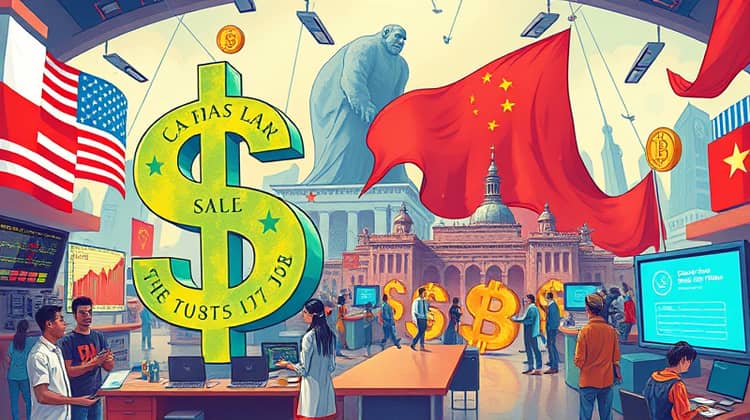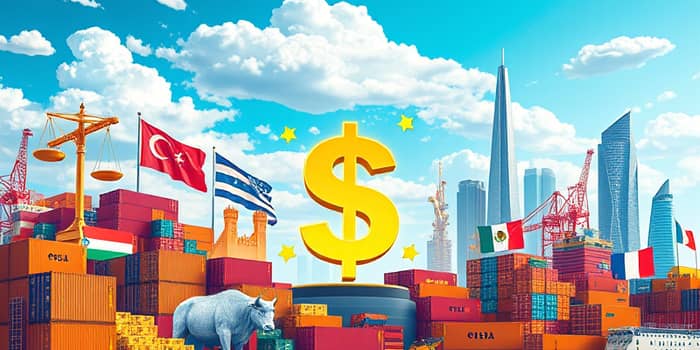The dollar has held the status of the world's dominant reserve currency for decades, which raises a crucial question: why does it continue to maintain this position? Various factors have solidified the dollar's role as the cornerstone of international finance, making it indispensable for global trade and investment.
To understand why the dollar remains the reserve currency of choice, we need to delve into several key areas including its historical context, economic factors, political stability, the robustness of U.S. financial markets, and possible challenges to its dominance.
This exploration of the dollar's status illustrates not just how it has remained stable, but also how it might adapt or face competition in the years to come. Let's analyze the components that contribute to the dollar's continued prominence in global economy.
Historical Context

The dollar's journey to become the world's primary reserve currency began in the aftermath of World War II. During this period, the U.S. emerged as a global superpower, both militarily and economically. This new prominence was solidified with the Bretton Woods Agreement in 1944, which established the dollar's value in relation to gold and other currencies intertwined with it.
As European countries rebuilt their economies, they relied heavily on the stability provided by the dollar. The elimination of gold backing in 1971 transitioned the dollar to a fiat currency, but the trust and established infrastructure around it ensured that it remained the preferred currency for international transactions.
- The Bretton Woods Agreement established the dollar as the leading reserve currency.
- Post-World War II economic dominance of the U.S. solidified dollar's significance.
- Transition to a fiat currency did not diminish trust in the dollar.
Economic Factors

The stability and strength of the U.S. economy significantly contribute to the dollar's status in global finance. The size of the U.S. economy and its level of economic influence are unparalleled, creating an environment where international stakeholders prefer to transact in dollars.
- The U.S. economy remains the largest and most influential in the world.
- The dollar is widely used in global commodity markets, such as oil and gold, promoting its demand and acceptance.
- American financial institutions are globally dominant, providing confidence to international investors.
Political Stability

Political stability in the United States is another significant factor contributing to the dollar's dominance. A government that is less prone to abrupt policy shifts allows for greater confidence among investors and foreign governments. This stability plays a crucial role in ensuring that the dollar remains a safe-haven currency during times of global uncertainty.
Moreover, established institutions and transparent governance have enabled the U.S. to maintain a strong rule of law, further solidifying trust in its economic outlook.
- Stable government promotes investor confidence.
- Transparency and rule of law support the dollar's status.
- U.S. military and diplomatic power reinforces global trust.
Financial Markets

The robustness of U.S. financial markets plays a critical role in maintaining the dollar's position. They are well-regulated, transparent, and provide liquidity that is highly attractive to global investors.
- U.S. Treasury securities attract global holders.
- Rapid and deep capital markets facilitate investor participation.
- Financial products involving the dollar are diverse and widely accepted.
- U.S. Treasury securities are considered one of the safest investments worldwide.
- Deep and liquid capital markets offer a range of investment options.
- American financial instruments are the most widely traded globally.
The combination of reliability, transparency, and efficiency in American financial markets draws international investors, which in turn, reinforces the dollar's stature.
Challenges to the Dollar’s Dominance

However, the dollar does face challenges, particularly from rising powers like China. As the effectiveness of decentralized finance grows and alternative currencies gain traction in trade agreements, the dollar's dominance may be threatened.
Additionally, efforts from other nations to develop their own digital currencies have the potential to shift international trading dynamics away from the dollar.
- The rise of China as an economic rival poses a potential challenge.
- Growing interest in digital currencies could reduce reliance on the dollar.
- Alternative trading networks may emerge in global platforms.
The Future of the Dollar as a Reserve Currency

Looking ahead, the future of the dollar as the world's reserve currency will likely depend on various factors, including geopolitical stability and continued economic growth in the U.S. It is possible to foresee scenarios where alternative currencies start to play a more significant role, especially if they provide better integration with global technology and finance.
Nevertheless, the dollar has a deep-rooted historical precedent and institutional entrenchment that could make its change in status slow and gradual. Even as other currencies develop, the dollar is likely to remain central to the global economy for the foreseeable future.
Continuous innovation in American financial sectors, along with sustained economic stability, will be instrumental in preserving the dollar's position as the leading reserve currency.










